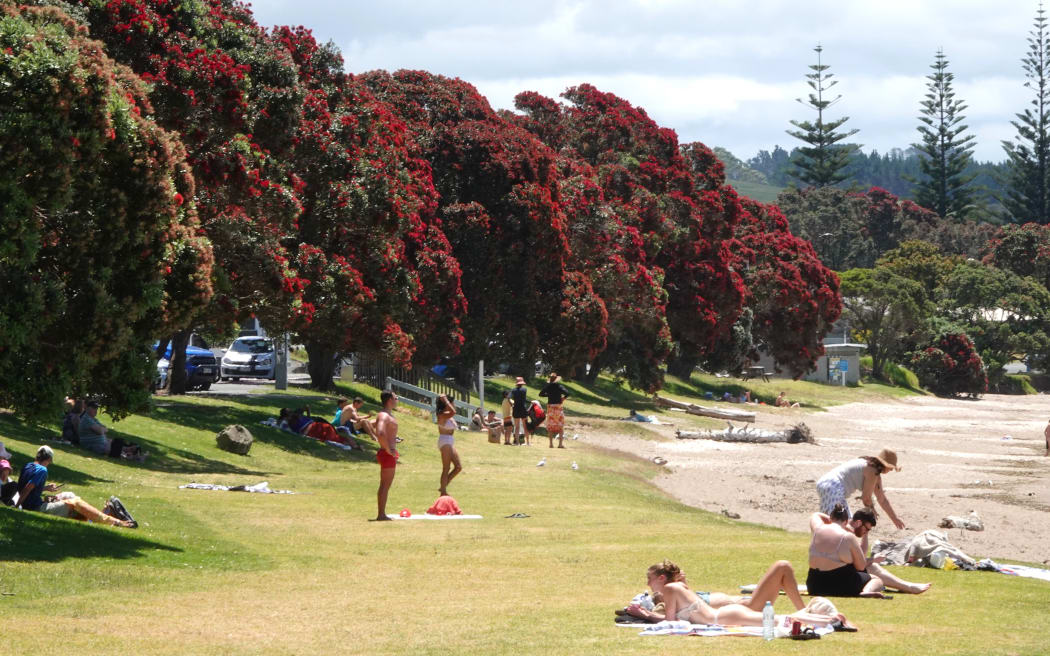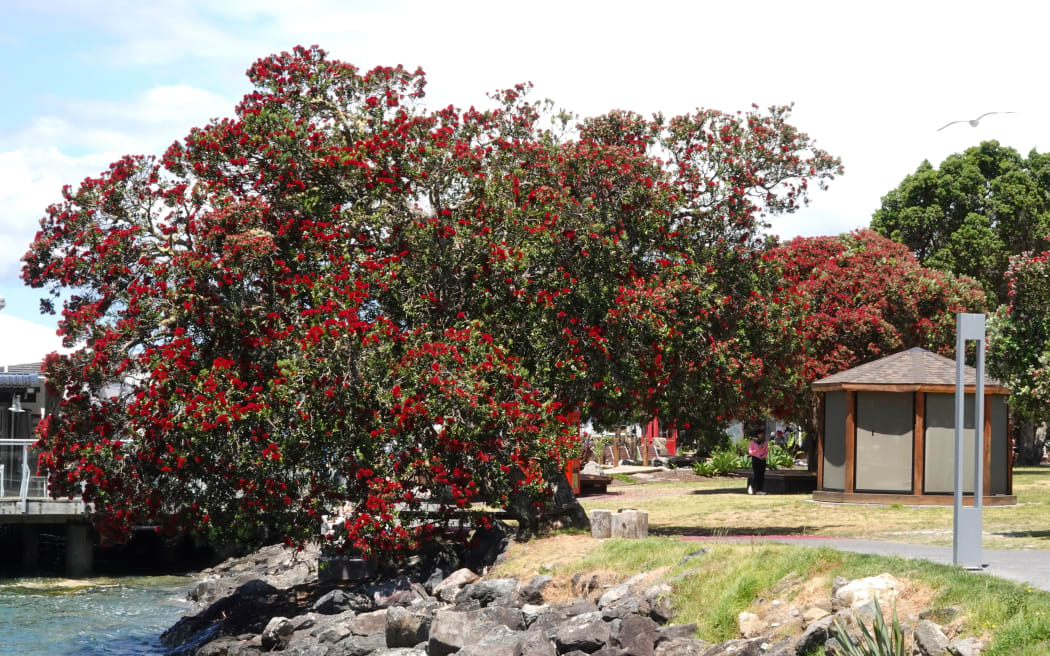
Pōhutukawa are in full bloom around Northland and Coromandel, including here along Paihia’s waterfront, due to what botanists call a mast event.
Photo: RNZ / Peter de Graaf
The Northland coast has been transformed into a sea of red in what a leading conservationist is calling the most spectacular flowering of pōhutukawa he has seen in 20 years.
Dean Baigent-Mercer, Northland conservation manager for Forest and Bird, said the explosion of colour was not confined just to the region’s most-loved coastal trees.
“This summer is a particularly spectacular year for pōhutukawa flowering, but it’s not only them. It’s also kānuka, porokaiwhiri or pigeonwood, taraire, tawa, karaka and other native trees. They’re all just having the most stupendous flowering season, which will also be a massive fruiting season come autumn.”
Baigent-Mercer put the remarkable display down to the “ridiculous” amount of rain across Northland during the past year.
“And of course there was Cyclone Gabrielle and other heavy rain events during that time, so there is a lot of water in the system, including the aquifers,” he said.
“Back in 2020 we had a really severe drought in Northland. Now it has switched and that is fuelling a very heavy flowering season. This is one of the consequences of climate change – as the climate heats there is more energy in our weather systems, things became more unpredictable and we get more extreme weather. And so all these different forest plants are reacting to the extremes that are happening around them.”
The term used to describe a sudden heavy flowering or fruiting was a “mast event”.

Pōhutukawa in bloom at Paihia’s Horotutu Park.
Photo: RNZ / Peter de Graaf
Baigent-Mercer said Northlanders were now witnessing a multi-mast event because many different species were involved.
Pōhutukawa did not flower consistently every year, he said.
“But it seems they’ve all flicked their on-switch and they’re going to maximum in this particular summer season. It’s a very are occurrence that it happens all at once. This is the most impressive flowering of pōhutukawa I have seen in 20 years, and if you look up valleys you will see they are white with kānuka flowers as well.”
There was, however, a potential downside for Northland’s native species once autumn came.
“It’s wonderful that there’s all this nectar there for birds, bats and lizards, and there’s going to be all this fruit production with all these big fats seeds coming in autumn,” he said.
“In that natural scheme of things that would feed the birds and lizards whose populations have been depleted, so they can build up and have an extra next for that year. But, unfortunately, if there’s no pest control going on, or very little, the food that is suddenly produced in abundance ends up in the mouths of rats and possums, and they have a surge in their population.”
In areas where pest control was in place, wildlife would benefit from the extra food.
In areas without pest control, rat plagues could decimate native species as the weather cooled.
That was particularly true in Northland, which had no rapid response plan for major mast events.
Baigent-Mercer’s message for anyone carrying out pest control was to be ready to ramp up in autumn – and for those who were not yet catching pests, now was a good time to start.
“There’s not a moment to lose. Fill up your bait stations, set your traps, go hard out, because the benefits will be reaped in autumn as that fruit falls,” he said.



